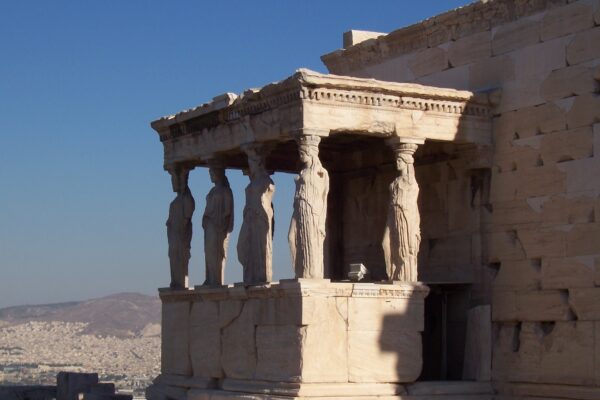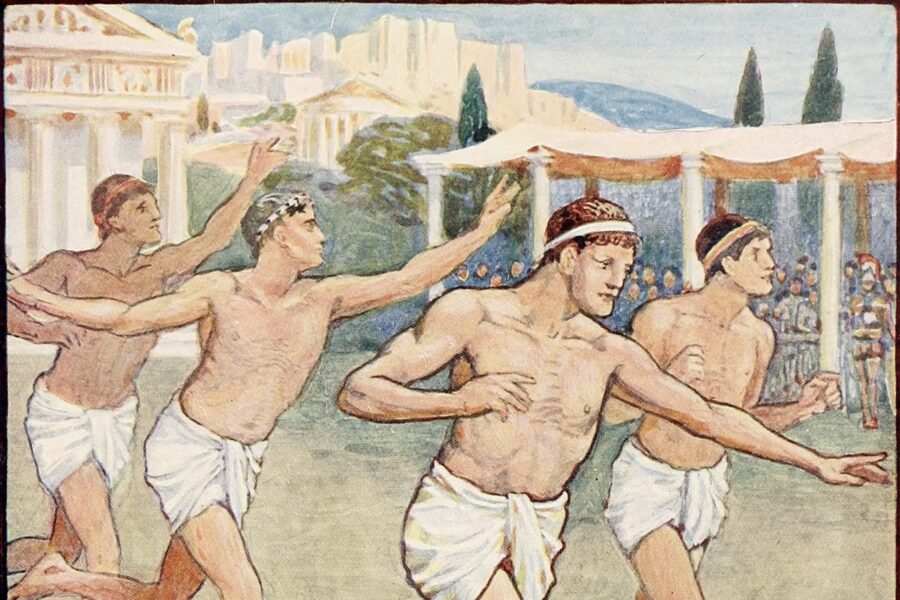
This is a summer of travel for Classical Studies faculty: Dr. Andy Findley went to Rome, and I, Dr. Liz Thill, unintentionally took a tour of small towns in upstate New York with classically inspired names (places visited or at least spotted: Seneca Falls, Ovid, Aurelius, Romulus, Camillus, Marcellus, Macedon, Palmyra, Tyre, Cato, and Victory). Now Dr. Kathryn Lauten, fresh off of visits to Rome and Pompeii, is touring Greece and collecting Nikes along the way.
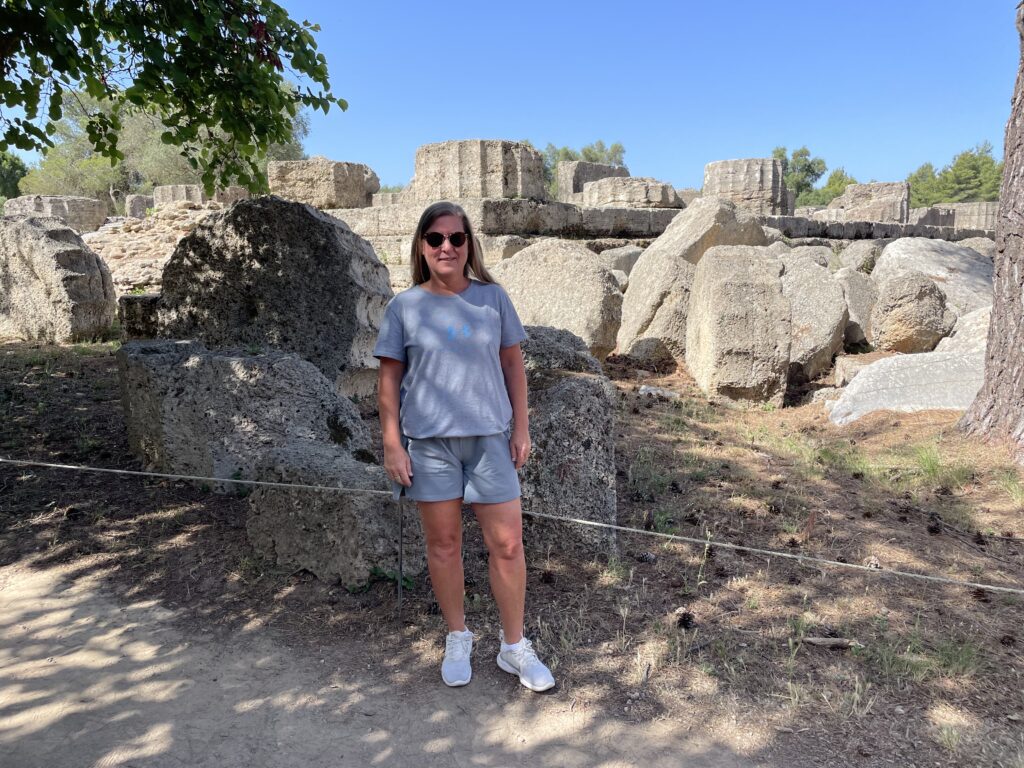
Here is Dr. Lauten in front of the Temple of Zeus at Olympia (no, not Mt. Olympus, that’s a mountain somewhere else). This temple was once the most famous temple in the world for Zeus, King of the Gods. Now it looks like a giant LEGO set that someone stepped on in the middle of the night, because earthquakes. The Temple of Zeus at Olympia was under construction just as Athens was finishing up the Parthenon. Athenians being Athenians, they decided they didn’t want to pay the Parthenon’s sculptor-architect, Phidias, and accused him of corruption. Specifically, they said he had pocketed some of the gold intended for the cult statue of Athena in the Parthenon. In an early example of corporate head-hunting, Phidias fled Athens to Olympia, where he designed the cult statue of Zeus for their temple: this statue went on to become one of the Seven Wonders of the Ancient World. Then either the people of Olympia killed Phidias, or he died in jail in Athens, because being a scab and/or world-renowned artist never pays.

Here is Dr. Lauten’s shoe in front of the pedestal for a statue of Nike at Olympia. Before she was a shoe brand, Nike was the Greek goddess of Victory, who had no personality whatsoever and just flew around granting wishes like a tooth fairy. This statue presumably was commissioned by someone who won something in the Ancient Olympic Games. These were athletic competitions that took place every four years, and included such familiar sporting events as chariot racing, naked wrestling, and poetry recitations. In 1856, a modern Greek gentleman named Evangelos Zappos would sell King Otto of Greece on the idea of doing a modern reboot of the games, featuring such familiar sporting events as pole climbing.
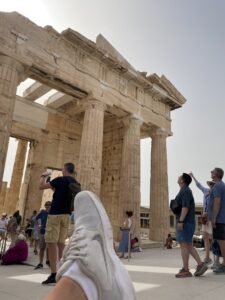
Here is Dr. Lauten’s shoe in front of the Propylaia of the Acropolis in Athens, looking out towards the Temple of Athena Nike. This monumental gateway was part of the grand building program that the Athenian leader Pericles had envisioned for the Acropolis: unfortunately his architect Phidias got the boot (see what I did there?) and Pericles himself died of plague, so the Propylaia was never finished, like a grand Olympics stadium that now just sits, its full potential unrealized, in some modern metropolis (looking at you, London…and Beijing…and Rio de Janeiro…).
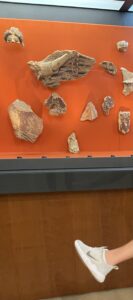
Finally, here is Dr. Lauten’s shoe in front of a fragmentary Nike akroteria at Delphi. Delphi was another Greek city that was on the rotation of important athletic games. While Olympia had a kicking statue, Delphi had an Oracle who was considered the most direct route to seeking the wisdom of the gods. Logistically, she was a teenage girl who sat in a fancy chafing dish above a chasm in the ground that spewed toxic gas. People would travel across the Mediterranean so they could use her to slip into the gods’ DMs. She would respond to their questions with gibberish, partially because that was her gig, and partially because she was seriously high and probably brain damaged from inhaling toxic fumes everyday. Then some male priests would say “What I’m sure the young lady meant to say was…” and fill in whatever they thought their audience wanted to hear. This system was foundational to Greek and Roman religious practice for centuries, because the Ancient World was insane.


